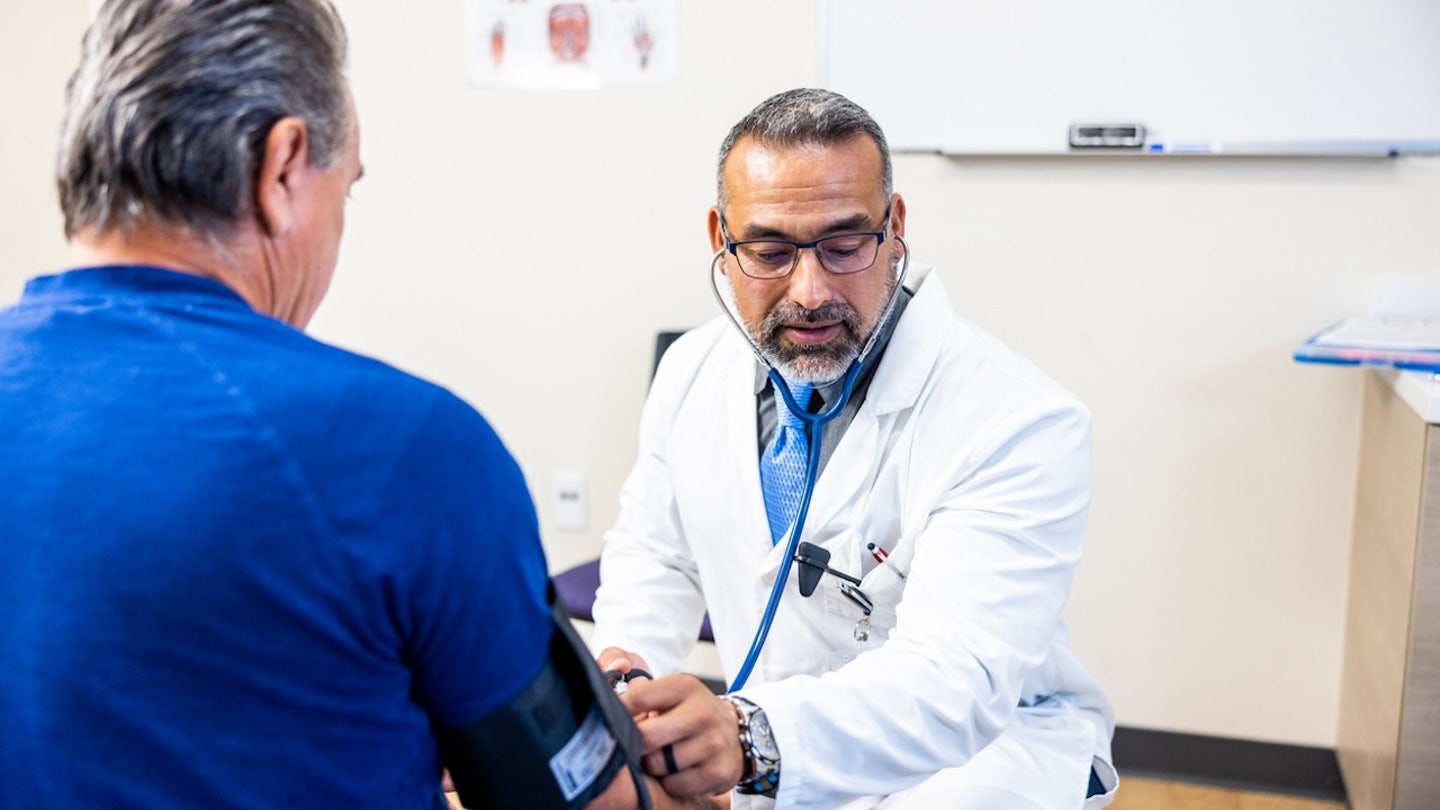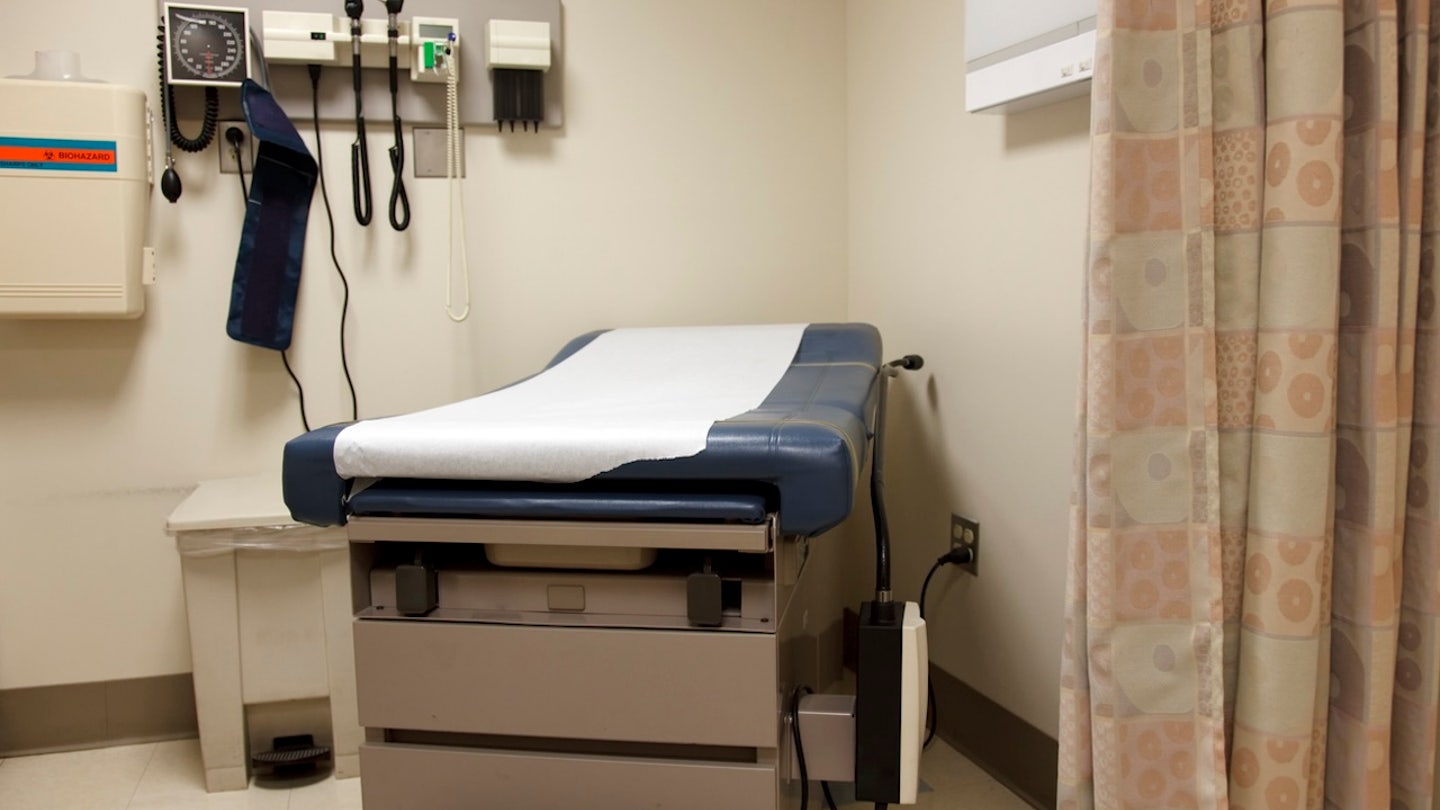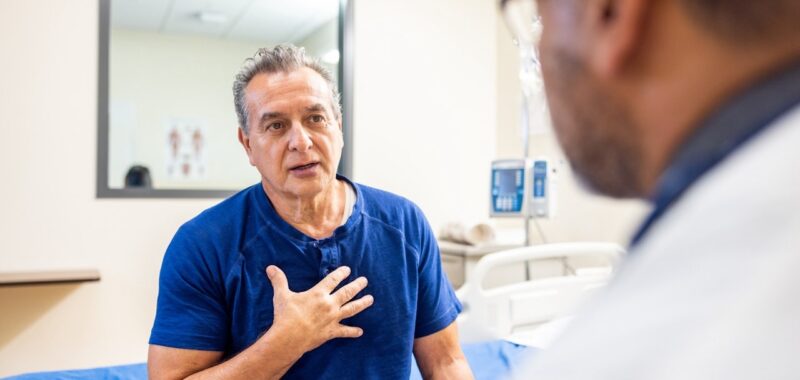Nearly half of all U.S. counties don’t have a practicing cardiologist on staff, according to a recent study published in the Journal of the American College of Cardiology (JACC).
Rural communities are most affected, with Americans in those areas dying earlier and more often from heart disease that could have been prevented, according to a May report from the Centers for Disease Control and Prevention (CDC).
The study, led by Brigham and Women’s Hospital in Boston, analyzed over 3,100 counties.
TOP 10 CAUSES OF DEATH IN THE US, SEE THE CDC’S LATEST LIST
Forty-six percent of the counties did not have access to cardiologists — meaning that 22 million residents would not have access to heart-related health care.
When looking just at rural counties, more than 86% of them did not have a cardiologist.

Nearly half of all U.S. counties don’t have a practicing cardiologist on staff, according to a recent study published in the Journal of the American College of Cardiology. (iStock)
“While cardiologists are not the only determinants of cardiovascular outcomes, the lack of access to cardiologists in areas with greater prevalence of heart disease and mortality is incredibly concerning,” said senior author Haider J. Warraich, M.D., director of the heart failure program at VA Boston Healthcare and an associate physician at Brigham and Women’s Hospital, in a press release.
How does this impact patients?
In counties without a cardiologist, patients have to travel an average of 87.1 miles to get the care they need, the study found.
“When a patient is having a heart attack, time matters,” said Dr. Bradley Serwer, a cardiologist and chief medical officer at VitalSolution, a Cincinnati-based company that offers cardiovascular and anesthesiology services to hospitals nationwide.

In the counties without a cardiologist, patients have to travel an average of 87.1 miles to get the care they need, the study found. (iStock)
“If a patient is unlucky enough to have a heart attack in a rural area, without cardiology services, they are sometimes transferred via ambulance or helicopter, but this takes time while the heart is dying.”
In some cases, these patients receive high-risk medications called thrombolytics to help stop the heart attack, according to Serwer, who was not involved in the new study.
“Thrombolytics are an inferior option to treat heart attacks compared to primary percutaneous coronary intervention (PCI), also known as stenting,” Serwer said.
“When a patient is having a heart attack, time matters.”
“Thrombolytics are a last resort when transfers are not possible or will take too long, as they are still better than the alternatives.”
Patients in rural counties have a higher age-adjusted cardiovascular mortality rate — on average, they live one year less than their urban cohorts, according to Serwer.
Why the lack of cardiologists?
Several factors may contribute to the scarcity of heart specialists in rural areas, according to Serwer.
HUNDREDS OF RURAL HOSPITALS ARE IN DANGER OF SHUTTING DOWN, STUDY FINDS: ‘AT RISK OF CLOSURE’
“Cardiologists train in academic hospitals with a wide network of colleagues, specialists and sub-specialists,” he told Fox News Digital.
“When they finish training, many of them want to join a large group practice or hospital practice, as there is comfort working alongside other cardiologists who can provide mentorship and guidance, especially early in one’s career.”

“These deficiencies cause a delay in care and can mean the difference between life and death,” a cardiologist said. (iStock)
Many cardiologists are unwilling to leave an urban environment to move to a remote location, he noted, particularly if they have children who need access to more schooling options.
Cardiologists in rural areas are also more likely to be overworked, Serwer said, due to the fact that the community may only have one or two heart specialists. Often, the community doesn’t have subspecialists such as CT surgeons, electrophysiologists or interventional cardiologists.
These factors ultimately lead to less time with the family and an unfavorable work/life balance,” the cardiologist said.
Another challenge is that rural facilities require a complex system to transfer patients for a higher level of care, he went on.
“Inpatient and critical care beds at tertiary medical centers are hard to find,” Serwer said. “These deficiencies cause a delay in care and can mean the difference between life and death, which takes an emotional toll on rural health care providers.”

Understand the importance of cardiac risk factor modification with healthy lifestyle, exercise, diet and medication compliance,” a cardiologist advised. (iStock)
There are also reimbursement considerations, as many rural hospitals don’t have the financial ability to pay their doctors adequately, according to Serwer.
There is also a great need for anesthesiologists in rural counties, he added.
“Nearly every hospital procedure requires an anesthesiologist, whether it’s cardiology, OB, orthopedics or general surgery.”
What needs to happen?
Solving the rural health care dilemma should start with greater awareness and a better understanding of the issues and limitations, according to Serwer.
One option is to set up “creative staffing models” to cover more parts of the country.”
“We need to reduce the hurdles and increase the incentive for physicians, nurses, technologists and administrators to provide rural health care,” he told Fox News Digital.
One option is to set up “creative staffing models” to cover more parts of the country, said Serwer.
HEALTH CARE IS ‘OVERWHELMINGLY COMPLEX’ FOR OLDER ADULTS, EXPERTS SAY: ‘EVER-INCREASING HURDLE’
His company, VitalSolution, partners with rural facilities to provide long-term coverage for cardiologists, nurse anesthetists, nurses and cath lab technicians.
“Our physicians work seven days on and then get seven days off,” he said.
“This unique model allows our physicians to work where they are needed and live wherever they want — it’s a win/win for physicians and community hospitals.”

Technology-based clinical support — such as telemedicine — should also be used on a wider basis, a cardiologist recommended. (iStock)
Technology-based clinical support — such as telemedicine — should also be used on a wider basis, Serwer recommended.
“We also need more governmental financial support for rural community hospitals and incentives for physicians, nurses, technologists and administrators,” he said.
CLICK HERE TO SIGN UP FOR OUR HEALTH NEWSLETTER
Another option is to promote rural health care while in medical school by requiring rotations in those communities, the cardiologist said.
“These rural rotations can be very rewarding, and can help young physicians gain a more comprehensive understanding of the practice of medicine.”

“Establish a relationship with a primary care provider and know more about your chronic medical conditions,” a doctor advised. (iStock)
The study researchers also called for policy changes to expand internet availability for telemedicine access and to broaden health insurance coverage.
Managing modifiable risk factors for heart disease could also help to reduce risk in rural communities, they stated.
CLICK HERE TO SIGN UP FOR OUR HEALTH NEWSLETTER
“This study underscores the urgent need for policy reforms and innovative solutions, such as financial incentives for clinicians and the expanded use of telemedicine, to bridge this gap,” said Harlan M. Krumholz, M.D., editor-in-chief of JACC, in the release.
“Ensuring equitable access to cardiovascular care is a crucial step toward improving overall public health outcomes and reducing preventable cardiovascular mortality.”
Short-term fixes
For patients who are currently living in one of the cardiac care “deserts,” Serwer recommended becoming familiar with the medical care that is available.
CLICK HERE TO GET THE FOX NEWS APP
“Establish a relationship with a primary care provider and know more about your chronic medical conditions,” he advised.
“Understand the importance of cardiac risk factor modification with healthy lifestyle, exercise, diet and medication compliance,” he also said.
For more Health articles, visit www.foxnews/health
Those who have a cardiac condition should make a plan of where and how to seek cardiac care if needed, the doctor said.
“They can also write to their elected officials to ask them to do more to supplement the existing health care infrastructure,” Serwer added.

